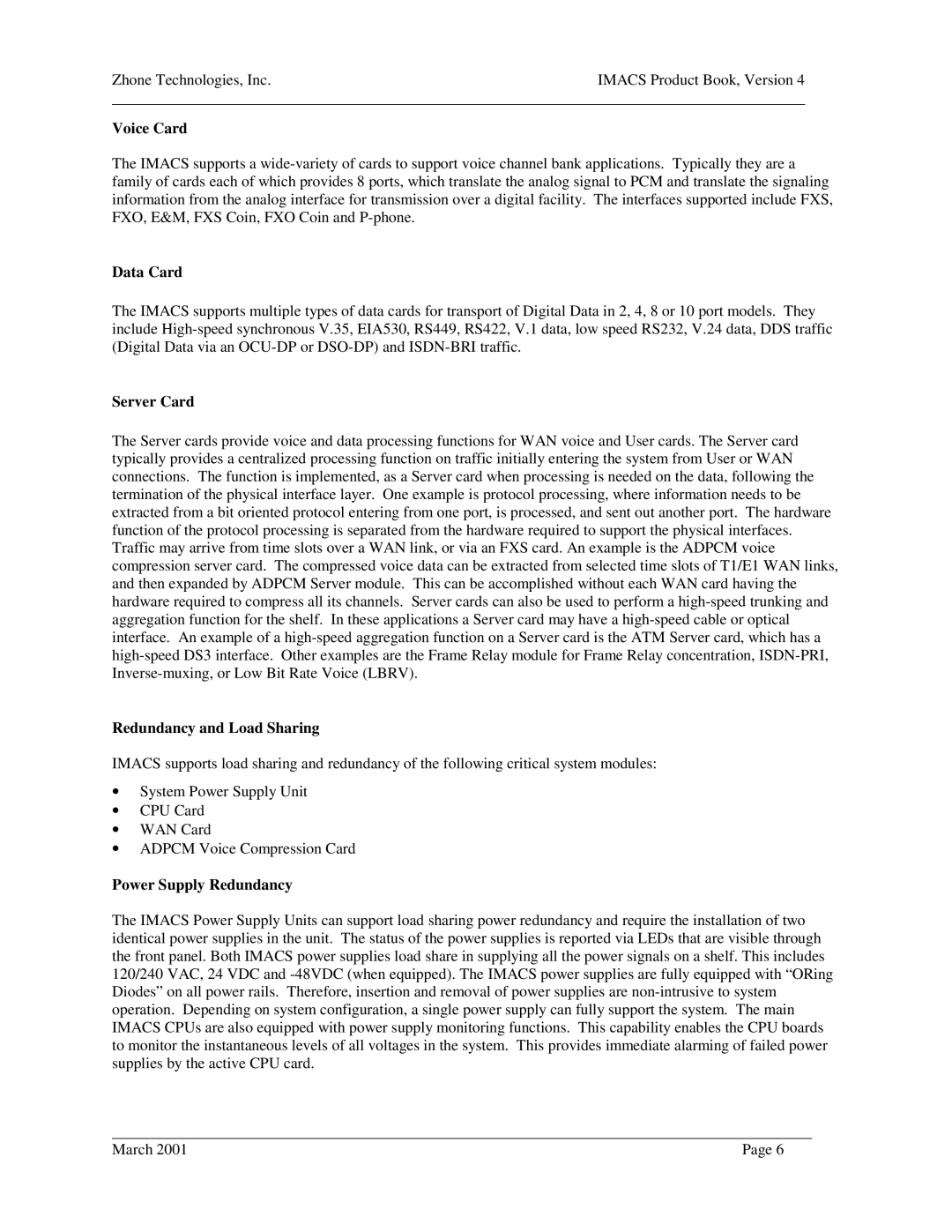Zhone Technologies, Inc. | IMACS Product Book, Version 4 |
Voice Card
The IMACS supports a
Data Card
The IMACS supports multiple types of data cards for transport of Digital Data in 2, 4, 8 or 10 port models. They include
Server Card
The Server cards provide voice and data processing functions for WAN voice and User cards. The Server card typically provides a centralized processing function on traffic initially entering the system from User or WAN connections. The function is implemented, as a Server card when processing is needed on the data, following the termination of the physical interface layer. One example is protocol processing, where information needs to be extracted from a bit oriented protocol entering from one port, is processed, and sent out another port. The hardware function of the protocol processing is separated from the hardware required to support the physical interfaces. Traffic may arrive from time slots over a WAN link, or via an FXS card. An example is the ADPCM voice compression server card. The compressed voice data can be extracted from selected time slots of T1/E1 WAN links, and then expanded by ADPCM Server module. This can be accomplished without each WAN card having the hardware required to compress all its channels. Server cards can also be used to perform a
Redundancy and Load Sharing
IMACS supports load sharing and redundancy of the following critical system modules:
•System Power Supply Unit
•CPU Card
•WAN Card
•ADPCM Voice Compression Card
Power Supply Redundancy
The IMACS Power Supply Units can support load sharing power redundancy and require the installation of two identical power supplies in the unit. The status of the power supplies is reported via LEDs that are visible through the front panel. Both IMACS power supplies load share in supplying all the power signals on a shelf. This includes 120/240 VAC, 24 VDC and
March 2001 | Page 6 |
